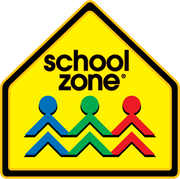Marking off the school year
Not only is spring break roughly halfway between the holiday break and summer break, but it re-energizes kids for the final crunch of the school year when concentration tends to fall off.

For some families, travel is the ticket. What to expect this year? The Mercury News, in "Spring Break Travel: What to Expect—and How to Keep Costs Down—in 2024," by Christopher Elliott, reports that while airfares are about the same as last year, car rental prices have dropped 36% and gas, an average of 5%. Travel industry experts they consulted noted that a little flexibility with schedules and travel times can save a lot of money.

All in all, the article predicts that it will be a very, very busy spring break—possibly one for the record books—and notes that "some travelers are skipping spring break entirely." It quotes Michelle Long, who works for a retail company in Austin, Texas: "I think we might just stay home this year and plan something after spring break. We'll save money, deal with less crowds, and have better control of our experience."
To beat the crowds, they also suggest planning a long weekend well before or after peak travel times "Or schedule your travel around a school-sponsored event that you don't have to attend, such as exams or teacher conferences."
Take a break from school, not learning
If you and yours are hitting the road, see the 2023 spring break post on this blog for tips to make it easier on kids—and yourself. If your clan is opting to stay home, consider adding something out-of-the ordinary. Volunteer with a charitable organization? Learn a new craft or skill together as a family? Imagine the huge range of options: a language, computer coding, Easter decorations, or an in-house read-a-thon to name a few. That last one is usually a fundraiser but consider challenging everyone in your family to compete for, not most pages or titles, but most minutes spent reading over break. How about a trip to the bookstore to let the winner pick out their "prize"?

Some community libraries have partnered with area park systems and other entities to host StoryWalk® activities with pages from selected stories blown up and "planted" along trails. The University of North Carolina, Greensboro, School of Education describes it as promoting literacy, reading, health, exercise, and movement in communities and neighborhoods across the United States and the world."
Along with other details, it says, "Typically, pages from a children's book are installed along a path. As you stroll along the path, you're directed to the next page in the story. Pages frequently are accompanied by activities or information." It also notes that StoryWalks can take diverse forms.
None in your area? Talk to your local library about starting one!
Pack big learning into small places
Even if plans call for sticking close to home, day trips and/or visits to family over spring break may be in the cards. Whether journeying near or far, actual cards—flash cards and game cards—are easy, compact take-alongs for a little extra play-anywhere learning fun.
For example, with the Dino Dig Card Game for ages 4 and up, little ones match prehistoric animals to their skeletons and learn their names. Playing this dynamic dinosaur game can help kids recognize matches and improve their concentration and visual memory—important for reading, writing, and lots of everyday activities. They also expand vocabulary and imagination. The deck has 27 matching pairs; use some or all to adjust the level of difficulty for one or more players.

A similarly fun and playfully competitive way to help kids sharpen their math skills are Math War Addition & Subtraction Game Cards for ages 6 and up and Math War Multiplication Game Cards for ages 8 and up. Kids can play with a friend or sibling, each flipping over cards and solving the equation on them. The player with the highest value wins.

Other easy-to-pack learning tools are the compact 48-page, 8.5 X 5.37 tablet-style Little Busy Books.™ With the Buy More Get More (BMGM) Busy Book Bundle, the more you buy, the more you save! Offerings include workbooks to build specific skills such as "Get Ready to Read," "Get Ready to Tell Time," and "Get Ready to Count Money," and puzzles and game titles that build multiple skills such as My First Mazes Little Busy Book Grades P-K, My First Word Searches Little Busy Book Grades K-1, and My First Crosswords Little Busy Book Grades 1-2, along with many more.
Spring break is a great time to break away from routines and make great memories. Learning new skills and practicing "old" ones can be part of the fun.












